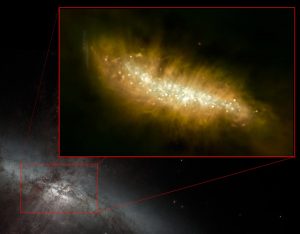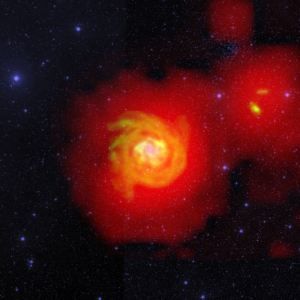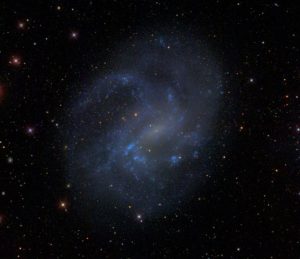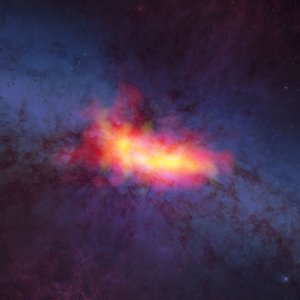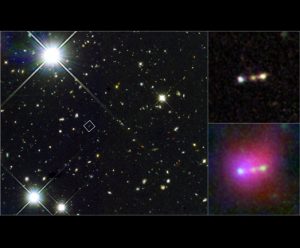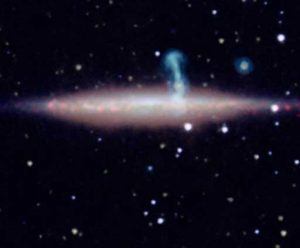Messier 82, the galaxy in which the nearest supernova in decades recently exploded, also is the closest galaxy that is undergoing a rapid burst of star formation, known as a starburst.
GBT Sees River of Hydrogen Flowing through Space
Using the National Science Foundation’s GBT, astronomer DJ Pisano from West Virginia University has discovered what could be a never-before-seen river of hydrogen flowing through space.
Dwarf Galaxies Give Clues to Origin of Supermassive Black Holes
Astronomers have found more than 100 small, dwarf galaxies with characteristics indicating that they harbor massive black holes feeding on surrounding gas.
Hidden Details Revealed in Nearby Starburst Galaxy
Using the new, high-frequency capabilities of the GBT, astronomers have captured never-before-seen details of the nearby starburst galaxy M82.
Infant Galaxies Merging Near ‘Cosmic Dawn’
Astronomers using the combined power of the Atacama Large Millimeter/submillimeter Array (ALMA) telescope and NASA’s Hubble Space Telescope have…
Surprising Image Provides New Tool for Studying a Galaxy
Astronomers studying gas halos around nearby galaxies were surprised Very Large Array showed that one of their subjects is not a single galaxy, but two, superimposed on the sky to masquerade as one.






